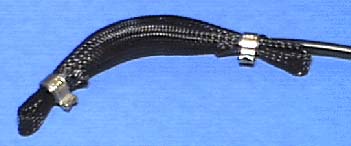

In some ways the air muscle is similar to Nitinol wire. Mainly in its ability to contract when activated. A quick comparison yields these results. Nitinol wire only contracts 5-7 % of it's length. The air muscle contracts 25% of it's length. Nitinol wire is a power hog. It consumes large amounts of electric current to function. While its response time may be quick, it's cycle (heating-cooling-heating) time is quite slow. The air muscle operates off of air pressure. While efficiency is lost using electric power to compress air, the compressed air can be stored. It's response and cycle time is very fast. Strength and overall power comparison are difficult. The small air muscle can lift 6.5 lbs. much more than standard Nitinol wire. Nitinol wire is weaker but only because the wire diameter (.006) is so small. Thick gauge Nitinol wire (not made and would be very expensive) would have hundreds of lbs (if not thousands of lbs) of contractive force.
We will first build two manually operated air muscle demo devices. Then we will interface the air muscle devices to the computer. If you are like me when I first encountered the air muscle I thought a pneumatic system would be too much of a hassle to build, regardless of how innovated the product is. I was wrong, the pneumatic system can be put together for about $20.00.
To control the air muscle via the IBM parallel port adds another $25.00 to the cost.